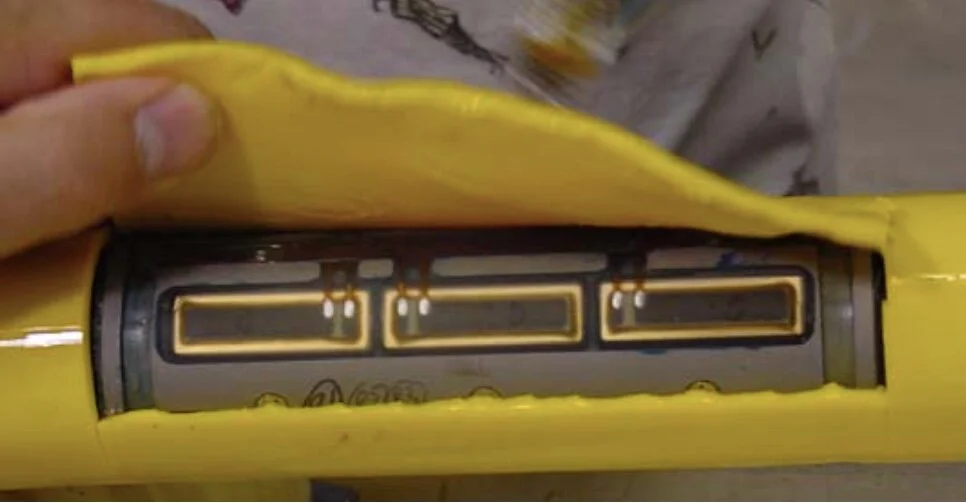Our Favorite Streaming Service
In the middle of the North Pacific, we’re not able to Netflix and chill—but we’ve got other streaming happening all the time! One of the Langseth technicians joins us for a guest post highlighting the king of castle out here—our seismic streamer….take it away, Klay!!
The Seismic Streamer
The streamer in the water—the end of it is 15 km away from the ship, way past the horizon.
The research vessel Marcus G. Langseth, which is being used to collect the data on this cruise, is a specialized vessel that is rigged to carry and deploy seismic streamer and airguns. The streamer is a plastic tube filled with hydrophones, electronics, wires and foam that is connected together from 150m long sections and deployed out the back of the ship as it moves through the water at 4 to 5 knots (about 5 miles per hour). On this cruise the streamer is 15 km long, therefore needing 100 sections, and containing 9,600 hydrophones (8 per channel, 12 channels per section). The streamer is stored on several reels that are 10 feet wide and 15 feet high, and which are powered by hydraulics to turn them. When deploying the streamers, the reels are turned to let the streamer out and it then trails behind the ship. There is a tail buoy that is connected to the tail end of the streamer which floats on the surface and has a radar reflector, GPS, and AIS so that ships can see where the end of the streamer is located in order to not run over the streamer.
The yellow ‘skin’ of the streamer protects hydrophones (shown here) and other electronics.
It is very important for the streamer to stay at a specific depth as it streams behind the ship collecting data, and in order for this to happen the streamer needs to be ballasted with weights, and controlled by ‘birds’. The ballasting is controlled by adding or removing 1 kg lead weights on the outside of the streamer based on the density of the water in the area of the survey. Different temperature and salinity of seawater in different areas of the world will cause the streamer to float or sink, and weights are used to make it neutrally buoyant. In this area we are using three weights per streamer. Once it has become neutrally buoyant it is easier to control the depth with ‘birds’. The birds are battery operated devices that can be set to maintain a depth by moving wings at an up angle or down angle, which when moving through the water will cause the bird and streamer to increase or decrease depth. The bird depths and wing angle can be controlled and changed after they are deployed on the streamer and throughout the survey from a computer interface on the ship. The birds also have a compass in them, which, when used all together can show what direction the streamer is at the bird position, and therefore give an overall shape and position of the streamer behind the ship. The birds are placed every 300 meters along the streamer and can rotate freely around the axis of the streamer. Attached to each bird is a Streamer Recovery Device (SRD), which contains an airbag that will automatically inflate if we loose control of the streamer and it goes below 45 meters. This will bring it to the surface to keep it from being damaged at depth, or lost completely.
Western Washington University graduate student, Lazaro Garza, after attaching a bird during streamer deployment.
When the airguns fire and create a seismic signal, the seismic wave goes down to the seafloor, and layers of geology under the seafloor, and are reflected and refracted back up through water and hit the hydrophones in the streamer. The hydrophones are made of ceramic piezoelectric material which converts the seismic pressure wave to electricity. This electrical signal is then digitized from an analogue signal collected by a group of hydrophones within each section. The digitized data from the hydrophones of every five sections is then collected by modules (basically modems) on the streamer before being then sent as a digital packets to the ship. When this data is received on the ship by equipment and software it then allows an observer to see the seismic signal in real time and ensure that it is of good quality as it is recorded. Once this data is recorded it can be then processed by computer programs to give the scientists a view of the geology under the seafloor.
Klay Curtis - Technician


